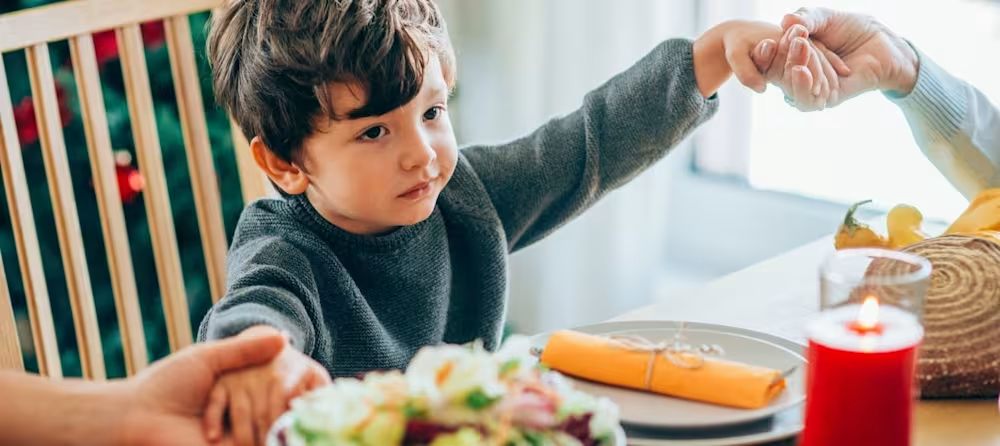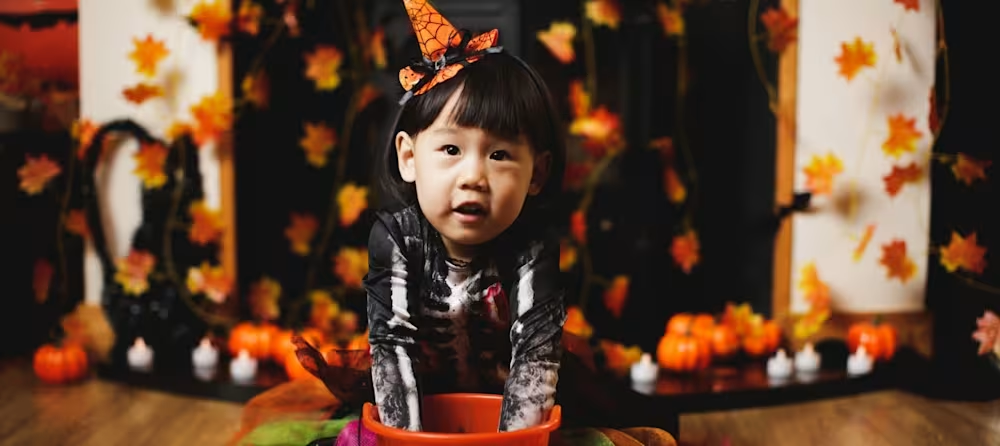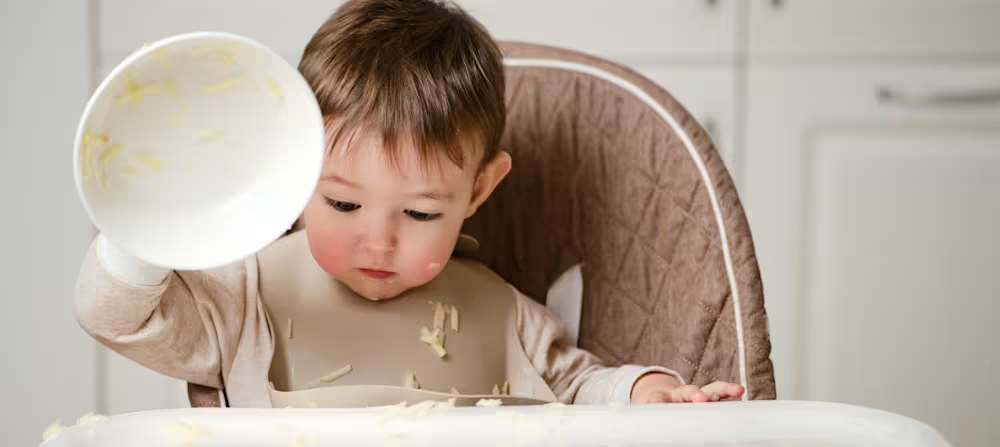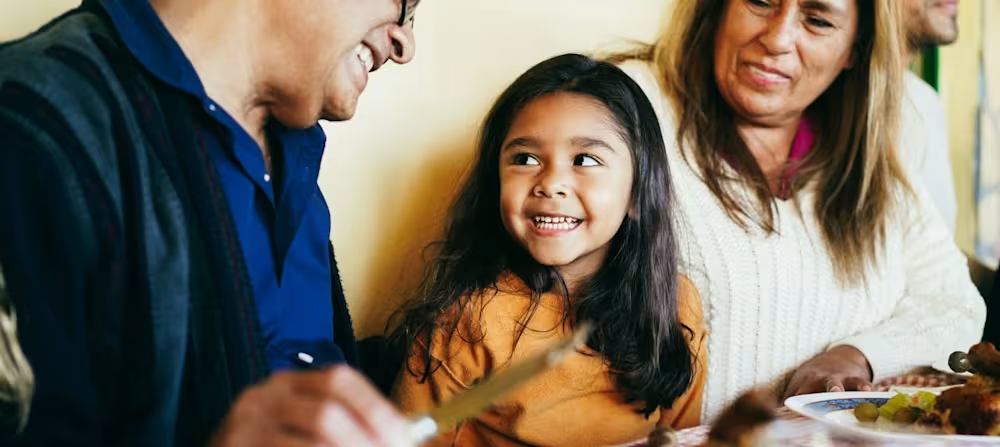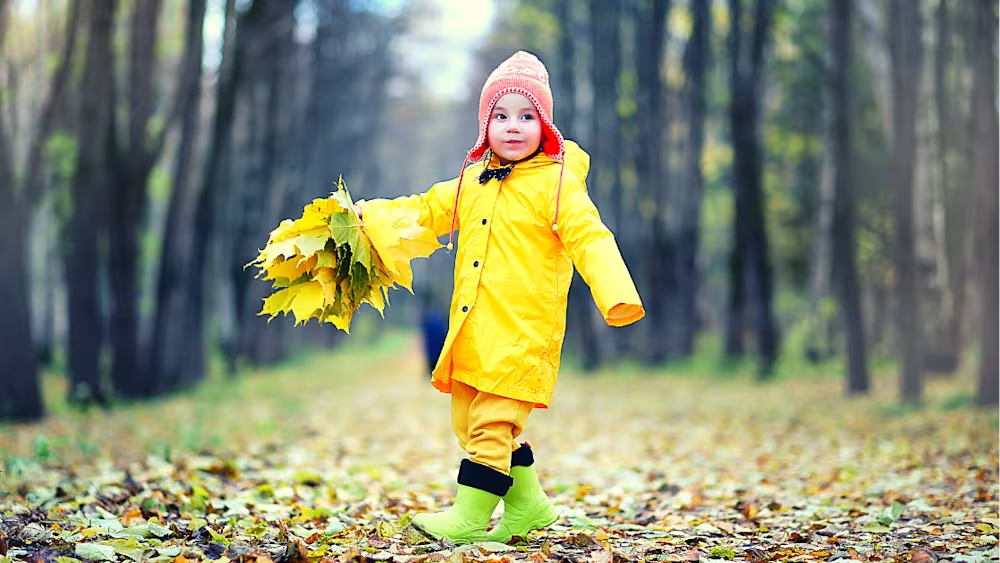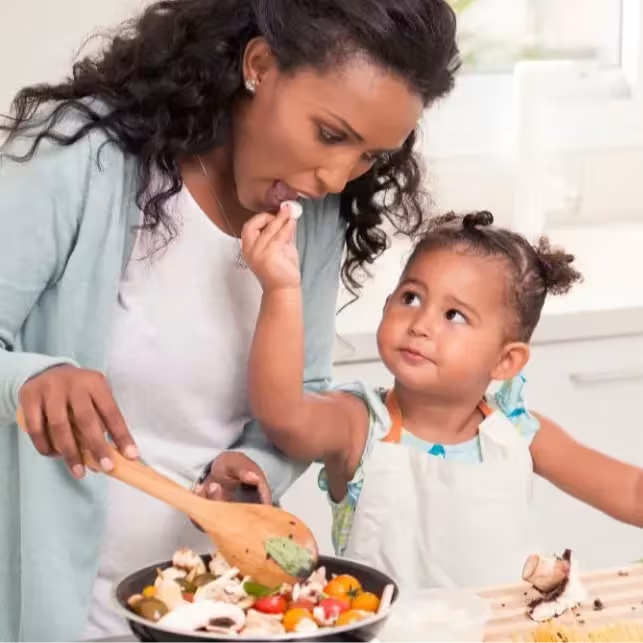Thanksgiving food for babies and toddlers: Can they eat stuffing?
Updated Oct 02, 2025

Turkey. Cranberry sauce. Green bean casserole. Name a more iconic American meal than Thanksgiving dinner. For many families, the holiday is steeped in tradition and quite frankly, an elaborate meal. But how does that translate once you add babies and toddlers into the mix?
Can they ... or better yet, will they eat our favorite Thanksgiving foods? While we can’t answer the latter, the quick answer to the former is a pretty big yes. Most of the foods on our holiday tables can be served safely to little ones and we’ve got you covered on how to do just that.
It is worth noting though, that holidays can be overwhelming for children and that can impact their eating. They may eat more or less than normal and they may or may not be open to trying new foods. Do your best not to worry too much -- a day or two of disrupted meals is not going to impact them in the long run.
Table of Contents
What Thanksgiving foods should I serve my toddler?
Good news! Pretty much all Thanksgiving foods can be served safely to your baby or toddler, eliminating the need to make special foods for your child. (Unless you want to!) Hopefully, you feel some of that holiday stress already melting away!
Since new environments and new people can distract kids from eating, it may be worth bringing along food your child is comfortable with if you are going to be a guest in someone else’s home. This can be as simple as fruit or cheese slices.
Keep reading for our serving tips and tricks for some of the most common Thanksgiving dishes.

How much Thanksgiving food is appropriate for babies and toddlers?
Repeat after us: There’s no right amount your baby or toddler should eat at Thanksgiving dinner -- or any meal for that matter!
Many kids will eat less than they typically do as there are a lot of other exciting things going on. This can be especially true for children going through a picky eating phase. Others will eat as they normally do or even eat a bit more than usual. Whatever happens is completely okay!
Thanksgiving food prep list for parents
We’ve gathered some of the most common Thanksgiving dishes and included safe serving tips below. Recipes differ from family to family (and we’re not here to tell you whether wet or dry brine is superior!) so consider this a quickstart guide to planning your baby or toddler’s Thanksgiving plate.
For the purposes of this list, we’ve considered a baby to be 6 - 12 months old and a toddler to be between 1 - 3 years old.
If you have a younger baby who recently , it may be best to stick to single foods and avoid foods with common allergens if you haven’t introduced them yet. We've noted which to look out for below.
Additionally, while most Thanksgiving foods can be adapted for this age group, it’s okay if you’d rather serve foods you’re more comfortable with, such as purees, or skip the meal altogether. Babies can still benefit developmentally from sitting with the family during mealtime, even if they aren’t eating.
Lastly, some of these foods may have more salt or sugar than you would normally serve to your baby or toddler. In the end, what you choose to serve is up to you, but know that one meal is not going to make much of a difference in their overall diet. Typically it's best to choose foods with less than 5-10% of the daily value for sodium or added sugar. But it can be difficult to measure a homemade recipe, so try not to sweat a one-off special occasion like Thanksgiving.
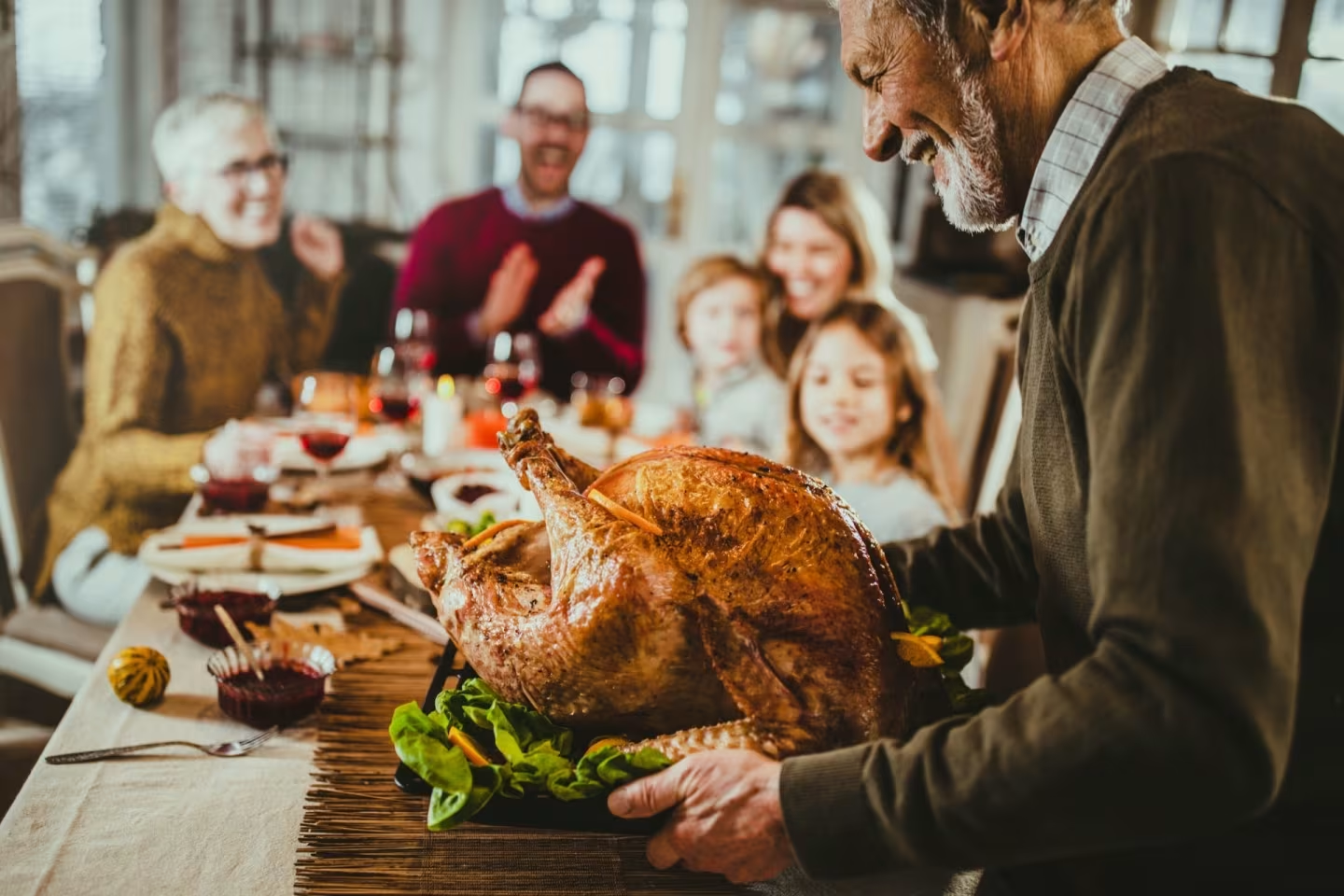
1. Turkey
Is it safe for baby to eat?
Yes, turkey is perfectly safe for babies! Make sure it is well-cooked to at least 165 degrees Fahrenheit and that it has a soft texture, not chewy. Turkey provides beneficial nutrients for babies and toddlers such as protein, zinc, and choline.
Potential allergens: None
How to serve to babies:
Blend into a puree
Shred thinly into small pieces
Pinky-sized piece for baby-led weaning
How to serve to toddlers:
Diced into small cubes
Use thin pieces to make a sandwich
2. Stuffing
Is it safe for baby to eat?
Yes, stuffing is a great choice for babies because it is soft! Watch out for larger pieces of food such as mushrooms or celery and be sure to chop well if needed. It’s common for toddlers to be hesitant to try this dish since there are a lot of foods mixed into one.
Potential allergens: Dairy (butter), eggs
How to serve to babies:
Small, well-chopped bite size pieces
How to serve to toddlers:
Diced into small cubes
3. Mashed potatoes
Is it safe for baby to eat?
You bet! The pureed texture of mashed potatoes make them a great option for babies. Plus, who doesn’t love mashed potatoes?! This is often a great “safe food” choice.
Potential allergens: Dairy (milk, butter)
How to serve to babies:
Pre-loaded on a spoon
On plate or tray -- let them use their hands!
How to serve to toddlers:
On plate or tray with a spoon (they may also use their hands)

4. Gravy
Is it safe for baby to eat?
Generally, yes. Some store bought gravies may be a little heavy on the sodium, so serve sparingly. Gravy could make a great dip for toddlers, who love to dip just about anything.
Potential allergens: Dairy (butter, cream), wheat (flour)
How to serve to babies:
Mix together with mashed potatoes
Use to moisten turkey
How to serve to toddlers:
Use to top mashed potatoes or turkey
Put on side as a dip
5. Green bean casserole
Is it safe for baby to eat?
Yes, green bean casserole is typically safe to eat as long as the veggies are cooked to a soft enough texture. Check by squeezing between your thumb and forefinger to see that they mash easily.
Potential allergens: Dairy (butter, milk, cream), wheat (flour)
How to serve to babies:
Blended into a puree
Pinky-sized piece for baby-led weaning
Small, well-chopped bite size pieces
How to serve to toddlers:
Diced into small pieces
6. Cranberry sauce
Is it safe for baby to eat?
Yes, cranberry sauce can be safe for babies and toddlers. Watch out for nuts and large pieces of cranberries as they could be potential choking hazards.
Potential allergens: Nuts
How to serve to babies:
Blended into a puree
Pre-loaded on a spoon
How to serve to toddlers:
On plate or tray with a spoon
Put on side as a dip
7. Sweet potatoes/yams
Is it safe for baby to eat?
Sweet potatoes and yams can be served many different ways -- candied, mashed, roasted, etc., but they are all generally safe for babies. Check to ensure the texture is soft enough and be aware of toppings such as nuts or marshmallows (both uncooked and roasted), which may present a choking hazard.
Potential allergens: Dairy (butter)
How to serve to babies:
Blend into a puree
Pre-loaded on a spoon
How to serve to toddlers:
On plate or tray with a spoon
Diced into small pieces

8. Pumpkin pie
Is it safe for baby to eat?
Yes, pumpkin pie is typically safe for babies to eat. Consider serving a few spoonfuls of just the pie filling for younger babies as the crust may be too difficult to chew. Pumpkin pie may have more sugar than you typically serve, so do what you feel is right for your family.
Potential allergens: Wheat (flour), dairy (butter, cream) eggs
How to serve to babies:
Pre-load a spoon with pie filling
How to serve to toddlers:
Diced into small pieces
9. Pecan pie
Is it safe for baby to eat?
Possibly! Pecan pie is made with nuts which are a choking hazard for kiddos under age 4. They do tend to soften up with baking, so it would be ok for a toddler with good chewing skills when served in appropriate sized pieces (about ¼ to ½ square inches).
Potential allergens: Nuts, wheat (flour), dairy (butter), eggs
How to serve to babies:
Best to skip due to choking risk
How to serve to toddlers:
Diced into small pieces
10. Bread rolls
Is it safe for baby to eat?
Not only is it safe, bread is a total crowd pleaser! Many babies and toddlers love bread and are comfortable eating it. If a roll is all your child eats out of the meal -- and this is a real possibility -- that’s ok.
Potential allergens: Wheat (flour)
How to serve to babies:
Pinky-sized piece for baby-led weaning
Small, well-chopped bite size pieces
How to serve to toddlers:
Whole, depending on bread
Diced into small pieces
Share article:
Note: The content on this site is for informational purposes only and should not replace medical advice from your doctor, pediatrician, or medical professional. If you have questions or concerns, you should contact a medical professional.
Table of Contents
Share article:
